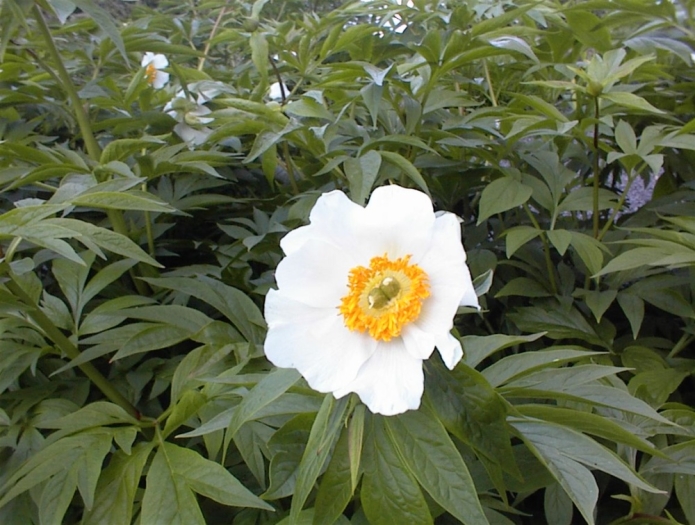Himalayan Peony
(Paeonia emodi)
Himalayan Peony (Paeonia emodi)
/
/

Epibase
CC BY-SA 3.0
Image By:
Epibase
Recorded By:
Copyright:
CC BY-SA 3.0
Copyright Notice:
Photo by: Epibase | License Type: CC BY-SA 3.0 | License URL: https://creativecommons.org/licenses/by-sa/3.0 | Uploader: Epibase | Publisher: Wikimedia Commons | Title: Paeonia_emodi1UME.jpg | Notes: {{Information |Description={{en|1=''[[:en::Palafoxia callosa|Palafoxia callosa]]'', sandy banks of [[:en:Llano River|Llano River]] near Castell, [[:en:Mason County, Texas|Mason County, Texas]].}} |Source={{own}} |Date=2019-05-22 |Author=Mason Brock ([[:en:User:Masebrock|Maseb

























Estimated Native Range
Summary
Paeonia emodi, commonly known as Himalayan Peony, is a deciduous perennial herb that is native to the alpine and subalpine regions of the Western Himalayas and Central Asia. It typically grows to a height and width of 3 feet (0.9 meters), forming an upright bushy mound of dark green, divided leaves. The Himalayan Peony blooms in late spring to early summer, producing large, bowl-shaped, fragrant white flowers with a flush of pink and yellow stamens at the center, which are highly attractive to pollinators.
The Himalayan Peony is valued for its large, showy flowers and is often used in perennial borders, cottage gardens, and cut flower gardens. It requires well-drained soil, enriched with organic matter, and consistent moisture during the growing season. Partial shade is preferred in hotter climates to prevent scorching. It is relatively low maintenance but may require staking due to the heavy blooms. Paeonia emodi is resistant to deer and rabbits, making it a good choice for areas with wildlife pressure. However, it can be susceptible to peony wilt (Botrytis) and requires good air circulation to minimize disease risk. It is not known to be invasive and does not have aggressive roots, making it a safe choice for most garden settings.CC BY-SA 4.0
The Himalayan Peony is valued for its large, showy flowers and is often used in perennial borders, cottage gardens, and cut flower gardens. It requires well-drained soil, enriched with organic matter, and consistent moisture during the growing season. Partial shade is preferred in hotter climates to prevent scorching. It is relatively low maintenance but may require staking due to the heavy blooms. Paeonia emodi is resistant to deer and rabbits, making it a good choice for areas with wildlife pressure. However, it can be susceptible to peony wilt (Botrytis) and requires good air circulation to minimize disease risk. It is not known to be invasive and does not have aggressive roots, making it a safe choice for most garden settings.CC BY-SA 4.0
Plant Description
- Plant Type: Herb
- Height: 2-2.5 feet
- Width: 2-2.5 feet
- Growth Rate: Moderate
- Flower Color: White
- Flowering Season: Spring
- Leaf Retention: Deciduous
Growth Requirements
- Sun: Full Sun, Part Shade
- Water: Medium
- Drainage: Slow, Medium, Fast
Common Uses
Bee Garden, Bird Garden, Butterfly Garden, Deer Resistant, Drought Tolerant, Edible*Disclaimer: Easyscape's listed plant edibility is for informational use. Always verify the safety and proper identification of any plant before consumption., Fragrant, Hummingbird Garden, Low Maintenance, Rabbit Resistant, Showy Flowers
Natural Habitat
Alpine and subalpine regions of the Western Himalayas and Central Asia
Other Names
Common Names: Mamekhor
Scientific Names: , Paeonia emodi, Paeonia anomala var. emodi, Paeonia emodi f. glabrata, Paeonia emodi var. glabrata,
GBIF Accepted Name: Paeonia emodi Wall.